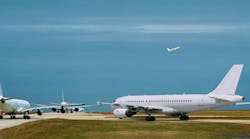by J.R. Wilson
WASHINGTON — Leaders of the U.S. Department of Defense (DOD) have warned Congress that one of the technology advances that U.S. forces have used so effectively in Afghanistan could become a serious threat to American national security if it falls into the hands of terrorists or those nations classified as "rogue states."
Vann Van Diepen, acting deputy assistant secretary for non-proliferation, told the Senate Governmental Affairs subcommittee on international security, proliferation and federal services in mid-June of the potential international threat posed by unmanned aerial vehicles (UAVs) and how DOD is moving to counter it.
"Just as they provide real opportunities for U.S. and allied militaries, UAVs also provide opportunities for our adversaries to threaten us," Van Diepen told lawmakers. "UAVs are potential delivery systems for weapons of mass destruction (WMD) and indeed are ideally suited for the delivery of chemical and biological weapons (CBW), given UAVs' ability to disseminate aerosols in the right places at the right altitudes."
The potential for an aggressive enemy to gain access to such technology is an offshoot of the success UAVs have had in the military and their potential widespread application in civil aeronautics. In addition to providing military UAVs to a number of NATO and allied nations, the U.S. also has employed them in civil efforts, such as NASA's Environmental Research Aircraft and Sensor Technology project (ERAST), which is working with various firefighting agencies to use UAVs to provide real-time, widespread sensor data on forest fires.
UAV development in the U.S. has ranged from the massive Global Hawk, which is roughly the size of a large business jet, to ongoing efforts to perfect bird-sized craft that individual soldiers could deploy for reconnaissance. These efforts also have meant advanced technology development in propulsion, navigation, computer control, miniaturization, sensors, and communications.
Van Diepen warns these technologies and those it already has taken the U.S. decades to perfect must be closely guarded. His call resembled that already in place for years regarding advanced computers, encryption technology, and others that have military and commercial uses.
"U.S. efforts to impede threats stemming from the proliferation of UAVs and their technology encompass a broad spectrum of measures," he says. "As in other non-proliferation areas, the U.S. attempts to use aggressively all of these tools to affect various aspects of the UAV proliferation threat."
Toward that end, the government has been employing the Missile Technology Control Regime (MCTR), which governs the spread of cruise missiles and all other unmanned flight technology. Created in 1987, MCTR enables controls on the materials and components required to produce and operate UAVs, as well as on completed aircraft.
Other international agreements to which the U.S. is party also have been applied to the threat, including the Nuclear Non-proliferation Treaty and the Wassenaar Agreement, which aims at controlling possible terrorist or rogue state actions. The Bush Administration also is using an assortment of other missile sanction laws to deter any nation with UAV technology from providing it to those groups or nations.
More than two dozen countries, including several in the Middle East, already have UAVs in service and more have indicated a desire to obtain them. Even more are actively involved in the production of UAV platforms or components.


